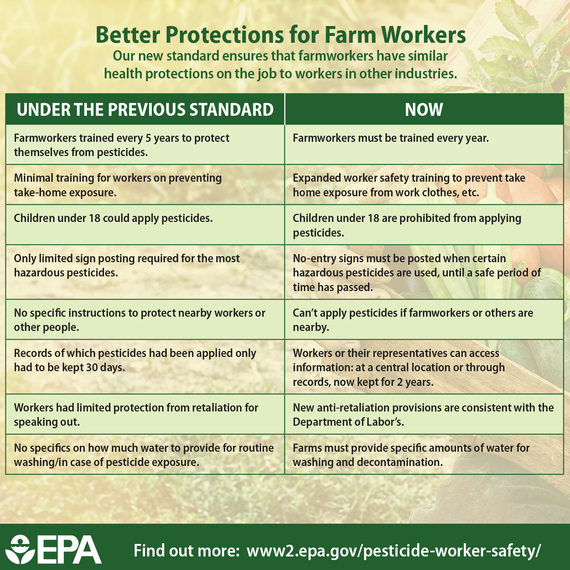We depend on our nation's two million farmworkers to help provide the fruits and vegetables we feed our families every day. But each year, thousands of farmworkers become ill or injured from preventable pesticide exposure, leading to sick days, lost wages, medical bills and absences from school.
Farmworkers deserve the same kinds of protections from workplace hazards that workers in other industries have enjoyed for decades.
That's why today, EPA announced stronger protections for workers on farms, in nurseries and in greenhouses. The updated Worker Protection Standard makes sure farmworkers know their rights through yearly training, have improved safety measures and access to information, as well as protection from retaliation for speaking out.
It's simple: This rule helps make sure our food is produced in a way that protects farmworkers' health and the health of their families.
The evidence is clear that managing for safety results in more productive, successful businesses. There are serious financial consequences for businesses that don't acknowledge the importance of worker safety. They not only endanger their own workers, they reduce their competitiveness and harm their bottom line. It's time to raise the bar for our agriculture workers in the United States. See how the 20-year-old rule has been upgraded:
EPA has worked hard to build on what we've learned since the original Worker Protection Standard was announced 20 years ago. From state and local partners, to the farmworker community, to farmers, ranchers and growers -- we've learned what works to protect farmworkers from pesticide exposure, and where we need to do more. We're confident that today's revisions will protect our strong farm economy and family farming traditions.
President Obama has called closing gaps of opportunity a defining challenge of our time. Meeting that challenge means ensuring clean air, clean water and safe work environments. Environmental justice is at the heart of EPA's mission to protect public health -- especially for vulnerable communities dealing with risks associated with pesticide exposure. And the Department of Labor is proud to support them in this effort.
The new Worker Protection Standard will help ensure strong, sensible safeguards for farmworkers, their families and the agricultural community across America.
